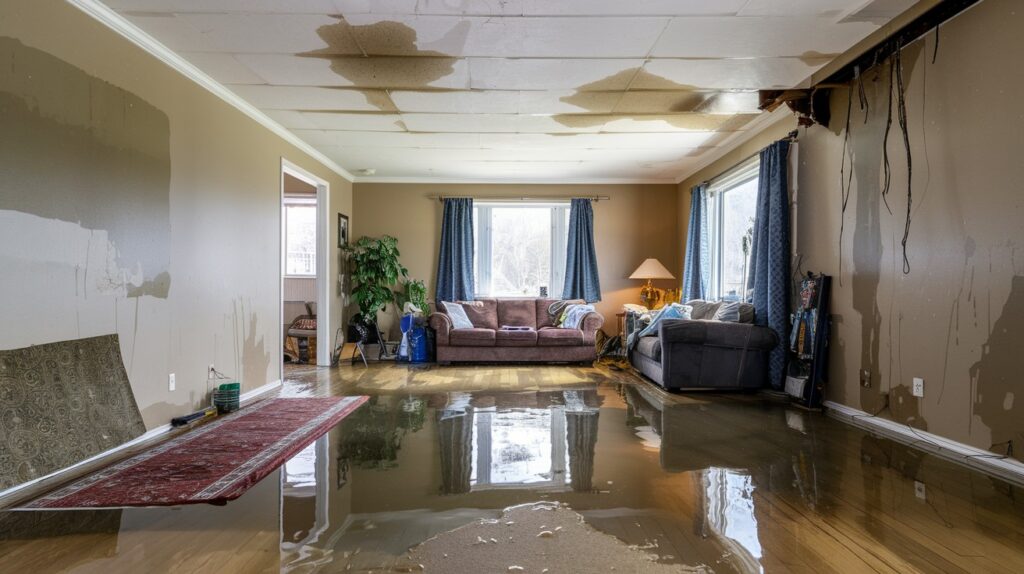Water damage is one of those homeowner nightmares that can happen when you least expect it. A burst pipe, a leaking roof, or even a natural flood can turn your safe space into a stressful mess in a matter of hours. Acting quickly is critical, not just to protect your belongings, but also to safeguard your home from long-term damage. Knowing what steps to take immediately can make all the difference between a manageable cleanup and costly repairs.
Why Speed Matters With Water Damage
The longer water sits, the more damage it causes. Furniture, flooring, walls, and electrical systems can all be affected in just a short period of time. According to the Insurance Information Institute, water damage accounts for nearly 29% of all homeowners insurance claims. That means it’s one of the most common and expensive issues homeowners face—and taking quick action can significantly reduce the impact.
Step One: Ensure Safety First
Before you worry about your belongings, make sure your family is safe. If the water damage is extensive, turn off the electricity to avoid shocks. In cases of flooding, avoid walking through standing water since it may contain contaminants. Safety should always come before cleanup.
Step Two: Stop the Source
Once it’s safe, identify where the water is coming from and stop it if you can. Shut off the main water valve if a pipe has burst or patch up a roof leak temporarily until repairs can be made. Stopping the source quickly prevents the problem from getting worse.
Step Three: Call in the Experts
Some homeowners try to handle water damage themselves, but professional help is often necessary. Trained specialists in water damage restoration have the equipment and experience to remove water, dry out your home, and prevent mold growth. Acting fast and calling in experts can save you both time and money in the long run.
Step Four: Begin the Cleanup Process
While waiting for professionals to arrive, you can start by removing items from the affected area to prevent further damage. Towels, mops, and wet/dry vacuums can help with small amounts of water, but leave heavy flooding to the experts. The key is to reduce standing water as quickly as possible.
Step Five: Protect Belongings and Document Damage
Move valuables, electronics, and important documents to a dry area. At the same time, take photos and videos of the damage for insurance purposes. This documentation will make filing a claim easier and faster.
Step Six: Prevent Mold Growth
Mold can begin to grow in as little as 24–48 hours after water damage. Proper drying and dehumidifying are essential to prevent this from happening. Professionals often use industrial fans and dehumidifiers to thoroughly dry walls, floors, and furniture. Don’t overlook this step—it’s crucial to protecting your health and your home.
Quick Checklist for Homeowners
When water damage strikes, here’s a quick list of what to do:
- Ensure safety first (turn off electricity if needed).
- Stop the source of water.
- Call a water damage restoration professional.
- Remove excess water if possible.
- Protect valuable belongings.
- Document damage for insurance claims.
- Take steps to prevent mold growth.
Final Thoughts
Water damage is stressful, but knowing what to do immediately can make recovery faster and less overwhelming. Acting quickly—by stopping the source, calling a professional restoration team, and protecting your belongings—minimises long-term risks like mold and structural issues.
Every homeowner should have a plan in place. By staying prepared and understanding the critical first steps, you’ll be ready to handle water damage head-on and get your home back to normal as soon as possible.

